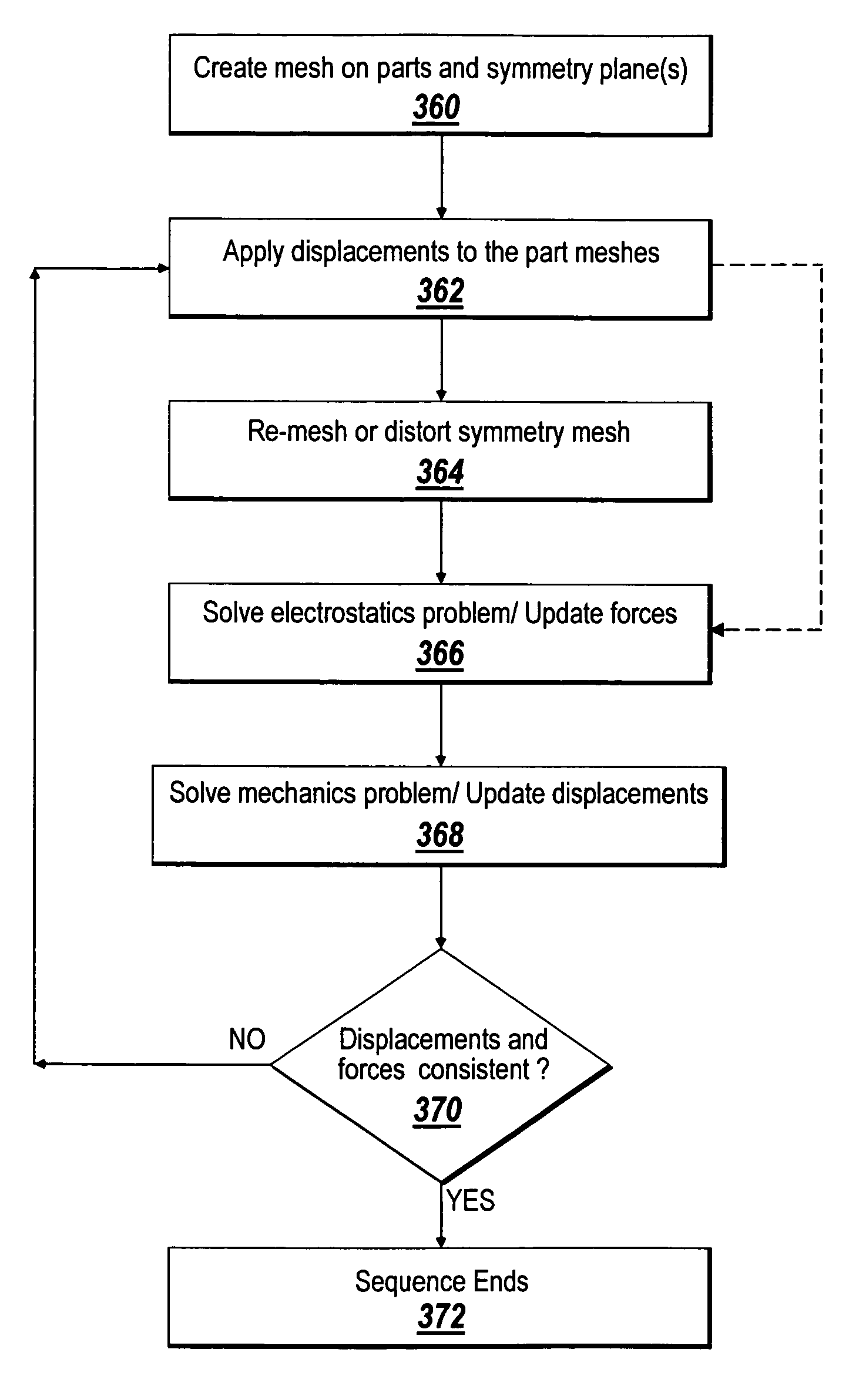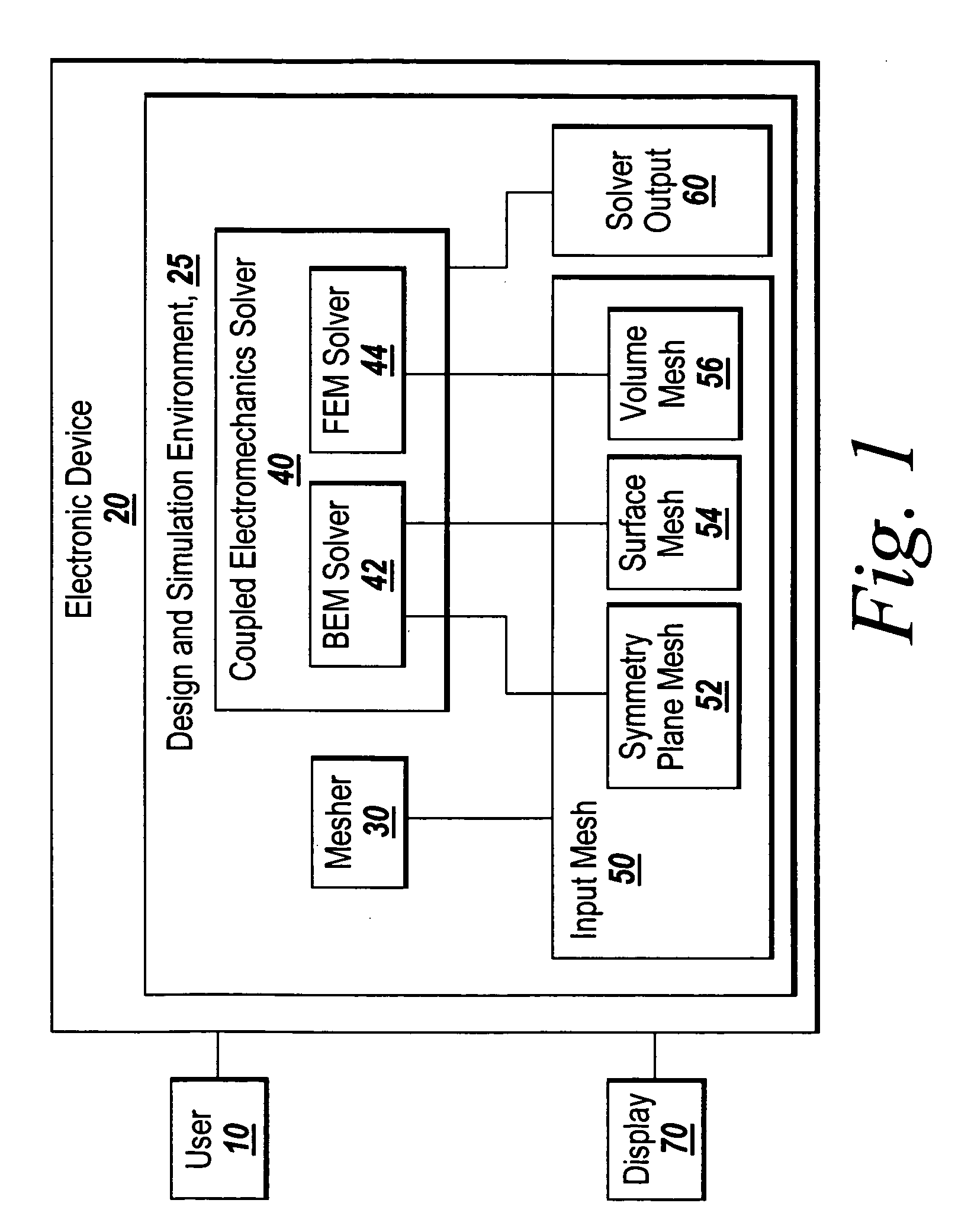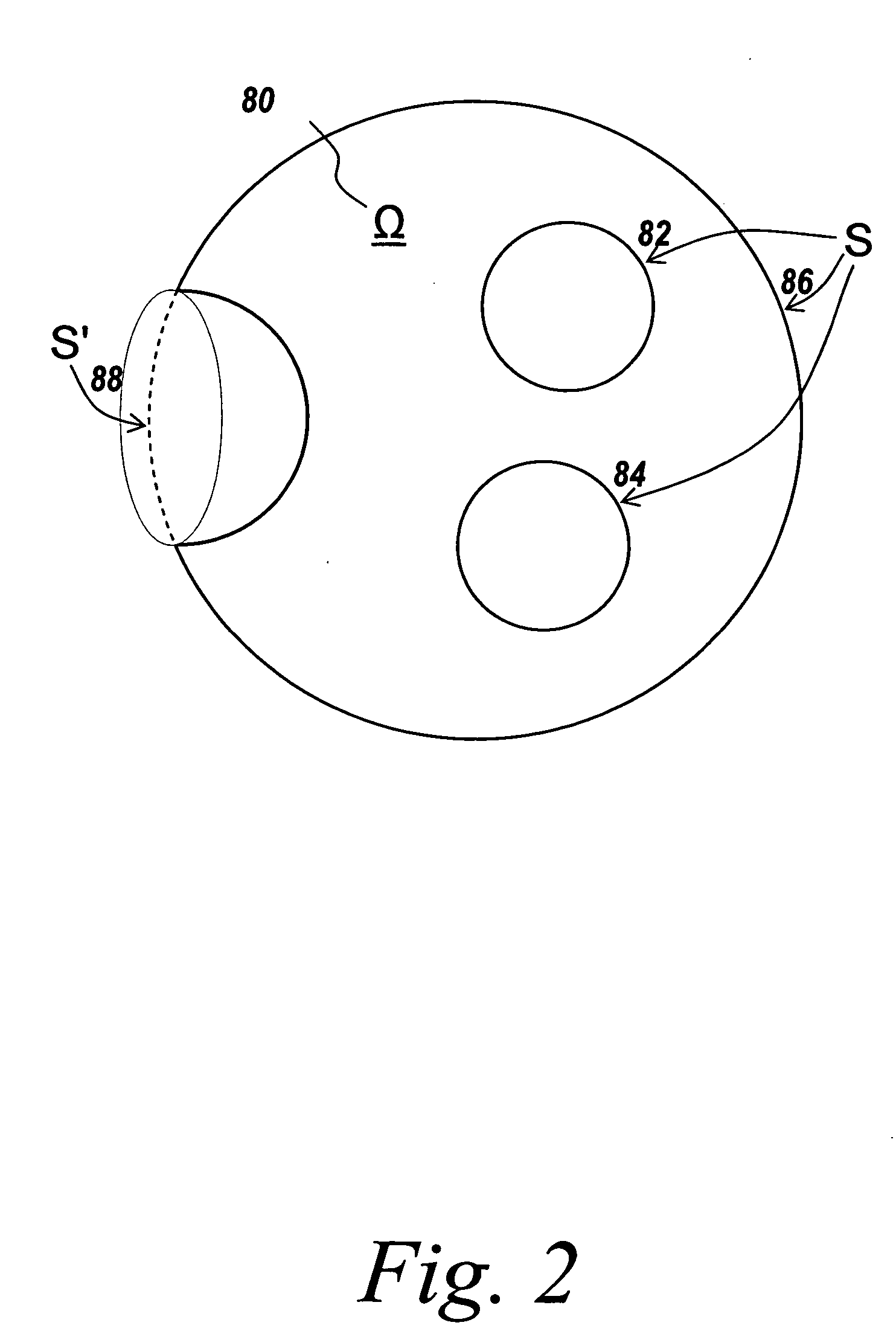System and method for numerically exploiting symmetry when using the boundary element method to perform computer-aided engineering
a numerical exploiting and boundary element technology, applied in the field of computer-aided engineering and simulation, can solve the problems of large amount of memory, high computational hardware and large computational hardware, and the inability to perform detailed electromechanical behavior simulation, etc., to achieve the effect of maximizing analytical efficiency
- Summary
- Abstract
- Description
- Claims
- Application Information
AI Technical Summary
Benefits of technology
Problems solved by technology
Method used
Image
Examples
Embodiment Construction
[0027] The illustrative embodiment of the present invention enables the rapid simulation of multi-domain devices such as MEMS. The present invention allows a hybrid BEM / FEM analysis of moving device parts to utilize time saving symmetry principles without requiring multiple episodes of re-meshing of any of the parts or the symmetry plane(s). An altered use of Green's theorem enables parts to move during a simulation without affecting the mesh on the symmetry plane(s) as would conventionally be the case. The present invention is thus particularly applicable to the simulation of MEMS and other multi-domain devices with moving parts.
[0028] Numerical PDE solvers take as input a discrete element model that represents the continuous device geometry and some constraints such as boundary conditions or initial conditions. These discrete elements comprise a mesh, and subdivide the large, complicated, geometric shapes of the device into small primitive shapes such as tetrahedra in volumes and...
PUM
 Login to View More
Login to View More Abstract
Description
Claims
Application Information
 Login to View More
Login to View More - R&D
- Intellectual Property
- Life Sciences
- Materials
- Tech Scout
- Unparalleled Data Quality
- Higher Quality Content
- 60% Fewer Hallucinations
Browse by: Latest US Patents, China's latest patents, Technical Efficacy Thesaurus, Application Domain, Technology Topic, Popular Technical Reports.
© 2025 PatSnap. All rights reserved.Legal|Privacy policy|Modern Slavery Act Transparency Statement|Sitemap|About US| Contact US: help@patsnap.com



